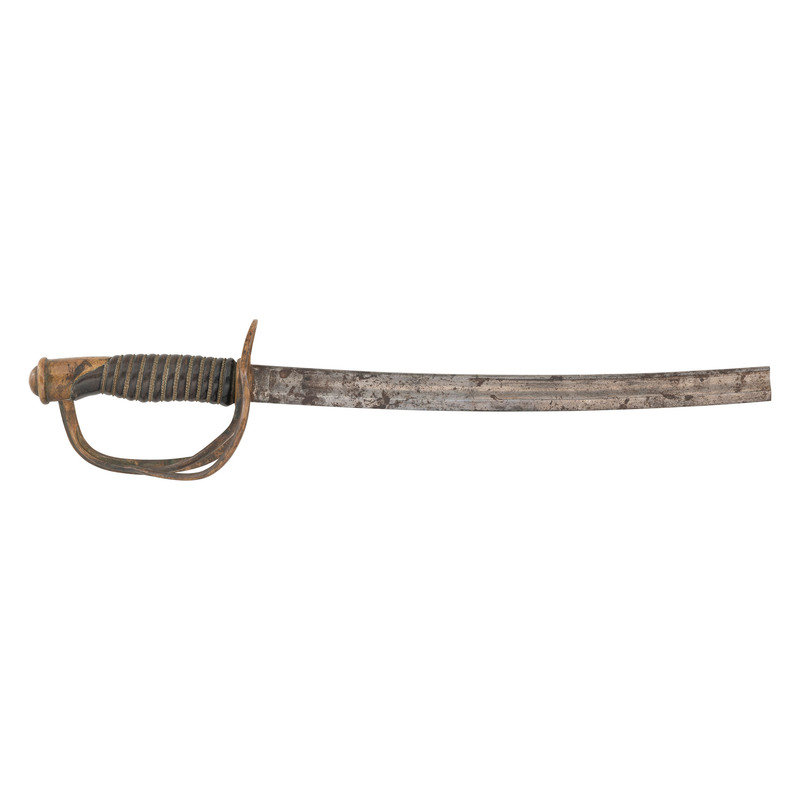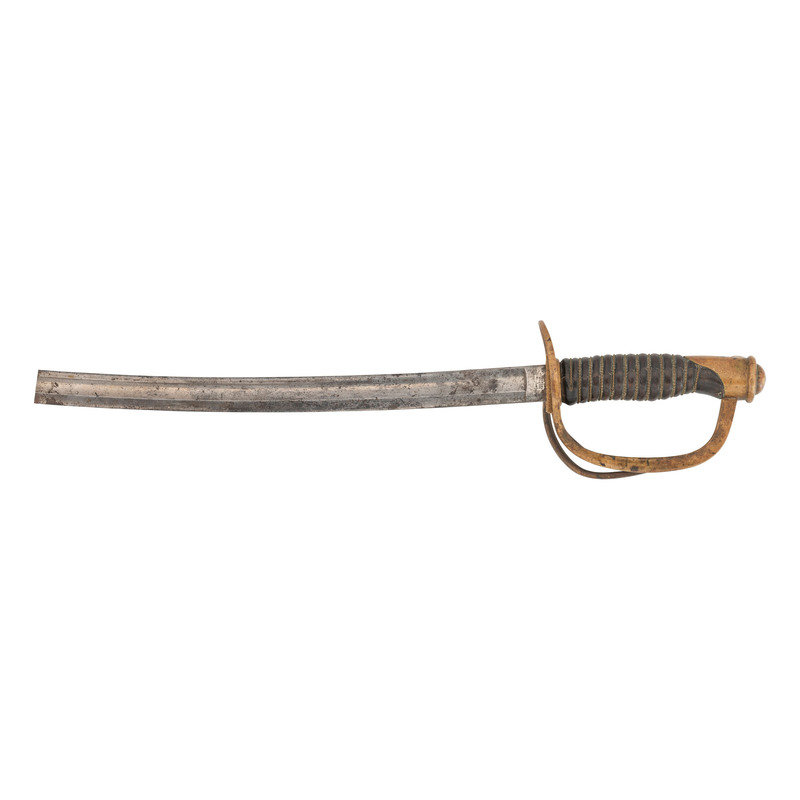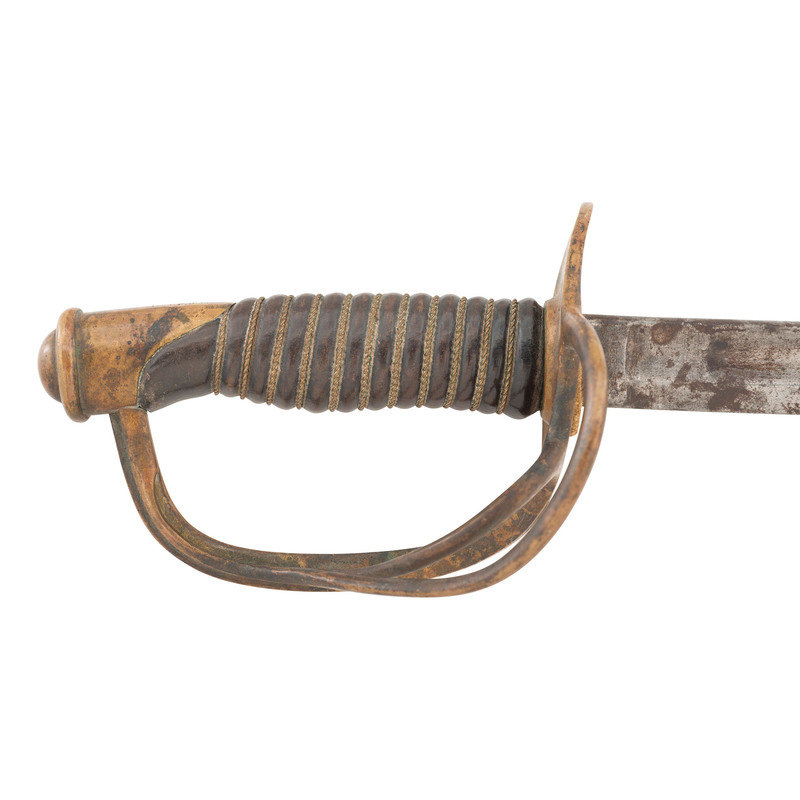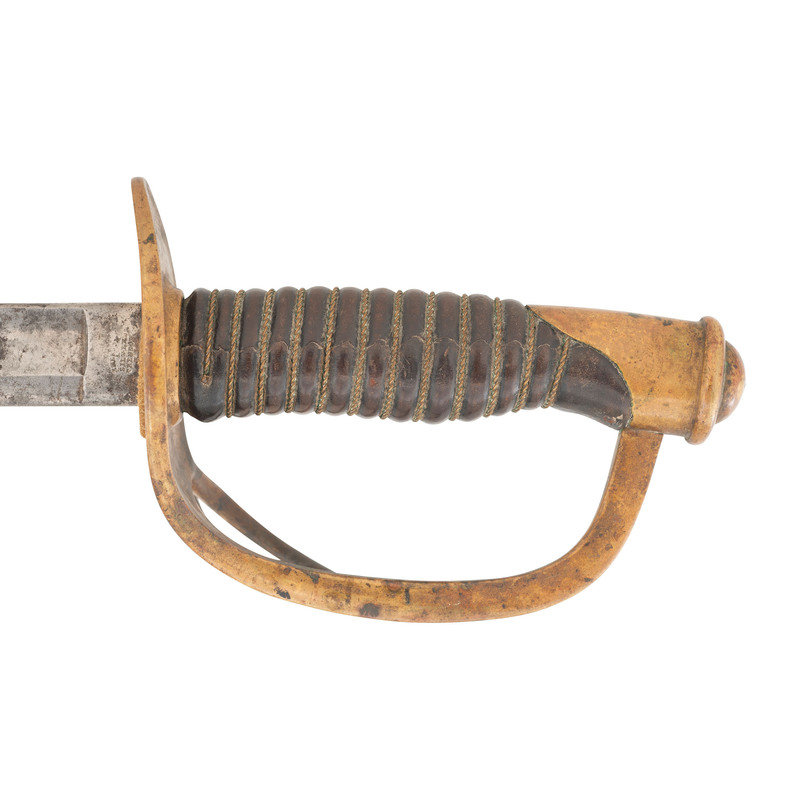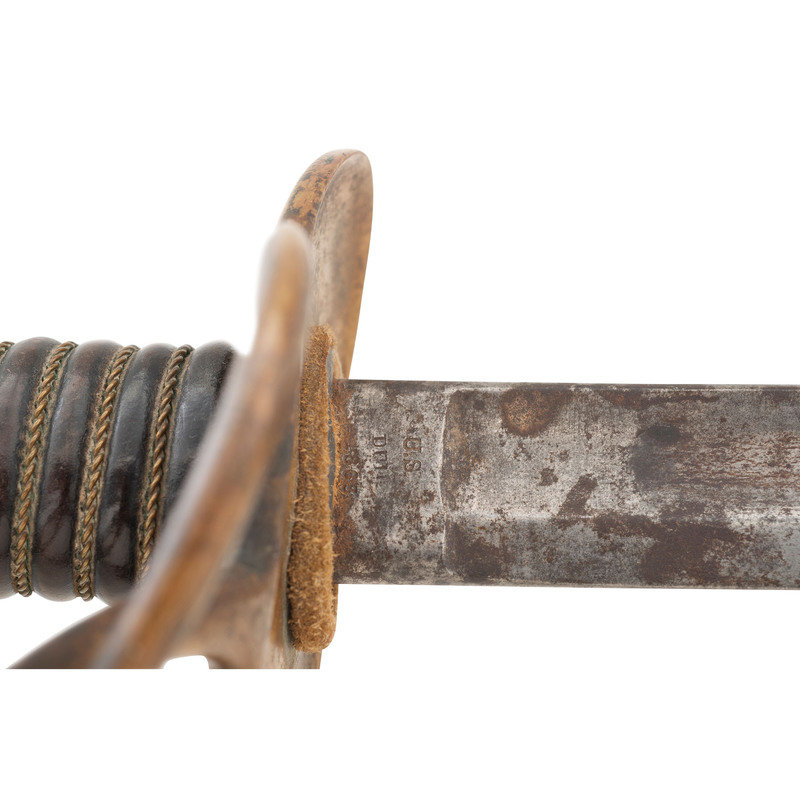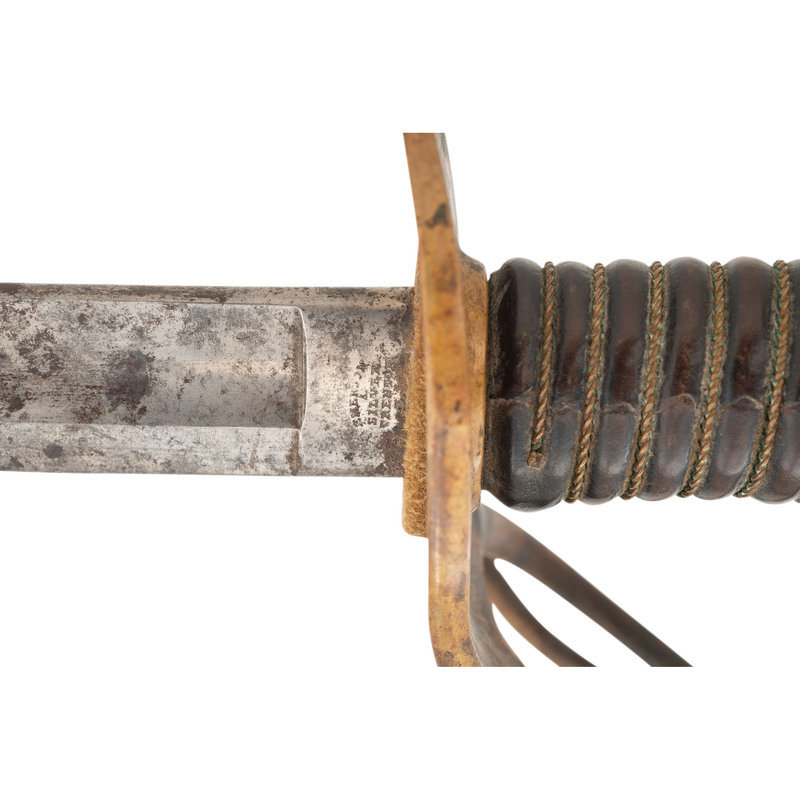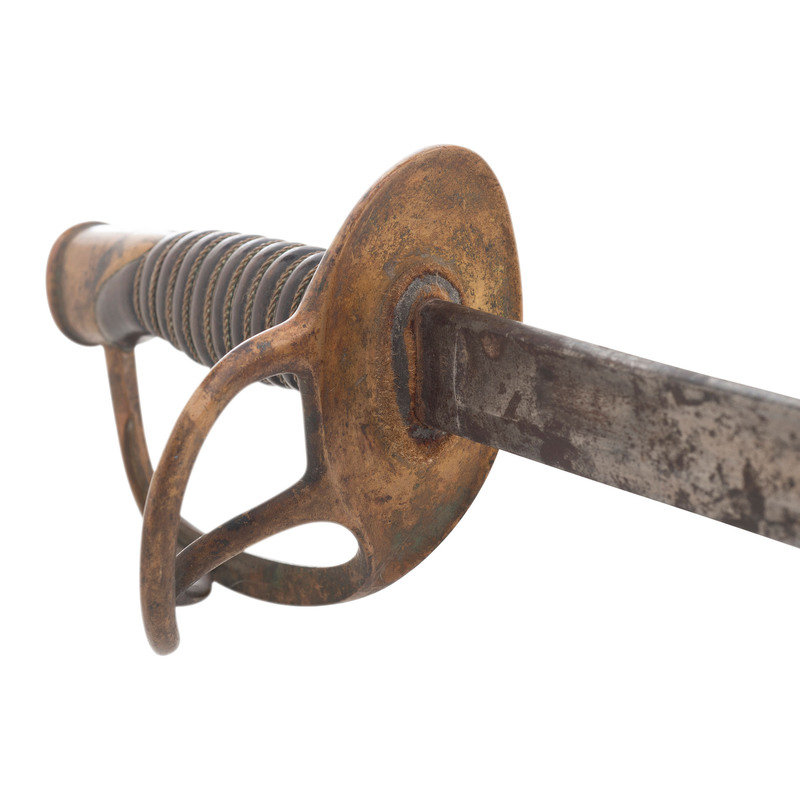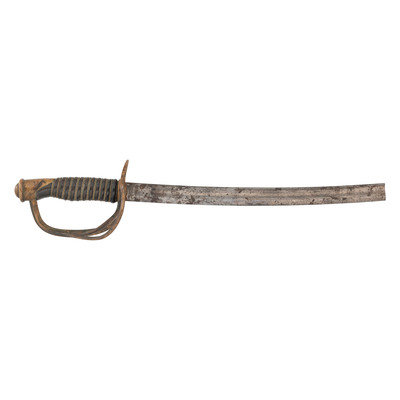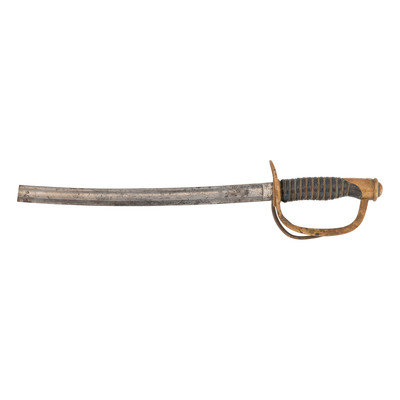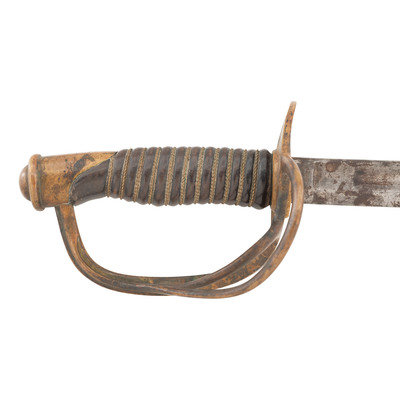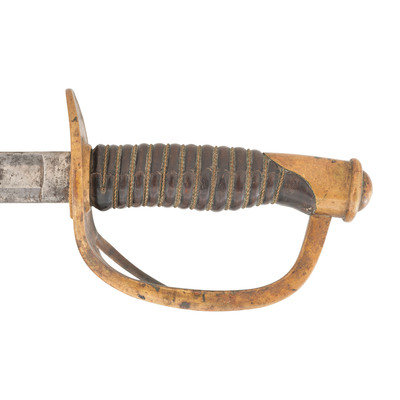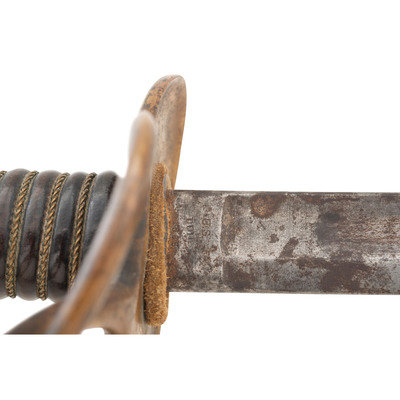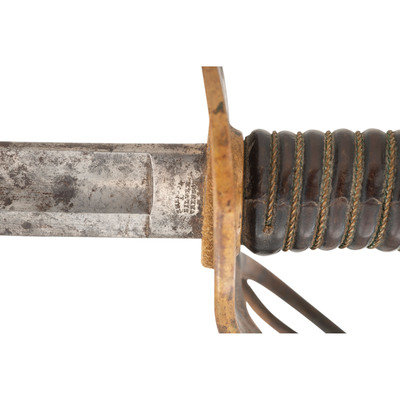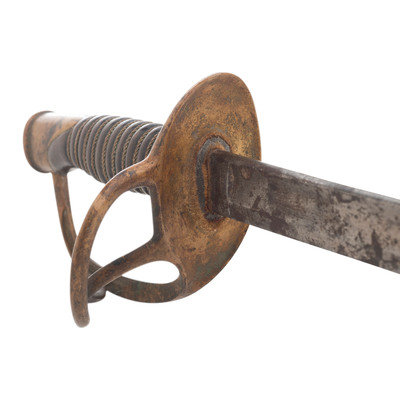Condition Report
Contact Information
Auction Specialists
Lot 1034
The Broken US Model 1860 Light Cavalry Saber of G.C. Sabine of the 1st DC Calvary, POW - Featured in North-South Trader Magazine
Sale 1351 - Arms, Armor & Militaria Online
Lots Open
Oct 13, 2023
Lots Close
Oct 26, 2023
Timed Online / Cincinnati
Own a similar item?
Estimate
$600 -
900
Price Realized
$1,080
Sold prices are inclusive of Buyer’s Premium
Lot Description
The Broken US Model 1860 Light Cavalry Saber of G.C. Sabine of the 1st DC Calvary, POW - Featured in North-South Trader Magazine
American Civil War
15" broken single edged blade with stopped median fuller, 21.25" in overall length. 6" hilt with cast brass two-branch guard and knuckle bow, grooved wood grip with leather cover and 11 wraps of twisted wire. Reverse ricasso marked EMERSON/&/SILVER/TRENTON and obverse ricasso marked U.S./DFM/1863. The same Dexter F. Mosman inspection, DFM, appears on the pommel cap as well. The top of the pommel is stamped G.C. SABINE/Co H./1st. D.C. Cav. This sword and its history was featured in a 2002 article in North-South Trader's Civil War (Volume 28 #5). The saber is accompanied by a large binder of research about Sabine, copies of the article and a full copy of that issue of the magazine.
George C Sabine was a 24 year old sailor from Eddington, ME when he enlisted in the 1st US Light Artillery in New York on October 26, 1861. He served with the 1st US Artillery through Antietam, but was discharged for health reasons due to heart valve issues in November of 1862. However on January 16, 1864 he enlisted in the recently formed 1st DC Cavalry and was assigned to Company H. The first DC cavalry was the only US military regiment to be completely armed with Henry repeating rifles during the American Civil War and was only regiment that was initially under direct control of the War Department. The history of the regiment was checkered at best and due to their less than stellar performance during the famous "Beefsteak Raid", where some 200 members of the regiment, along with their Henry rifles, were captured by Confederates under Wade Hampton. While the primary reason for the raid was to capture Union cattle to feed the hungry Confederate troops in the trenches at Petersburg, the Henry rifles were a huge bonus to the raid's success. The regiment was soon reassigned and re-designated as the 1st Maine Cavalry, as the eight original companies had originated from Maine. While continuing to serve in the Petersburg area, Sabine, who had been promoted to corporal during his service, was captured when he ventured outside of Union lines to forage. He was "reduced to the ranks" for his actions and would spend much of the balance of the war a prisoner in Richmond's notorious Libby Prison.
George C Sabine was a 24 year old sailor from Eddington, ME when he enlisted in the 1st US Light Artillery in New York on October 26, 1861. He served with the 1st US Artillery through Antietam, but was discharged for health reasons due to heart valve issues in November of 1862. However on January 16, 1864 he enlisted in the recently formed 1st DC Cavalry and was assigned to Company H. The first DC cavalry was the only US military regiment to be completely armed with Henry repeating rifles during the American Civil War and was only regiment that was initially under direct control of the War Department. The history of the regiment was checkered at best and due to their less than stellar performance during the famous "Beefsteak Raid", where some 200 members of the regiment, along with their Henry rifles, were captured by Confederates under Wade Hampton. While the primary reason for the raid was to capture Union cattle to feed the hungry Confederate troops in the trenches at Petersburg, the Henry rifles were a huge bonus to the raid's success. The regiment was soon reassigned and re-designated as the 1st Maine Cavalry, as the eight original companies had originated from Maine. While continuing to serve in the Petersburg area, Sabine, who had been promoted to corporal during his service, was captured when he ventured outside of Union lines to forage. He was "reduced to the ranks" for his actions and would spend much of the balance of the war a prisoner in Richmond's notorious Libby Prison.
From the Collection of George Oldenbourg
Condition Report
Contact Information
Auction Specialists
